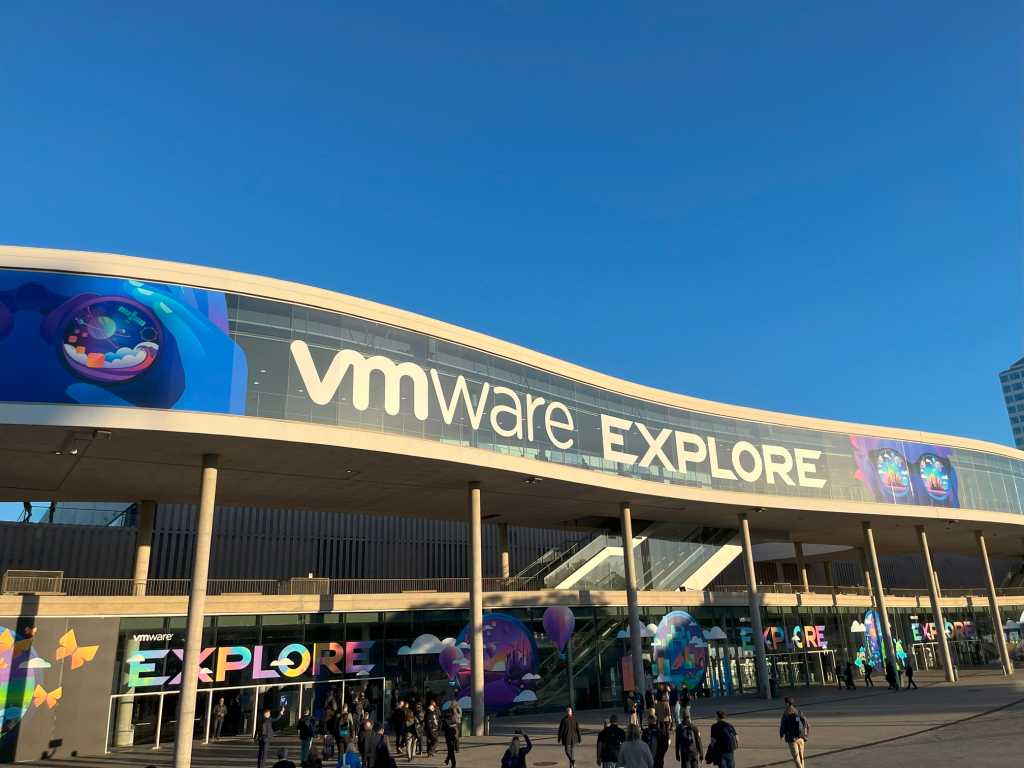Join our daily and weekly newsletters for the latest updates and exclusive content on industry-leading AI coverage. Learn More
Incention is launching a platform to bring AI and blockchain to Hollywood, and it is working with Hollywood writer David S. Goyer (Foundation, The Dark Knight trilogy, Blade) to redefine how modern entertainment franchises are developed.
Incention sits on top of Story (formerly Story protocol), a blockchain platform that transforms intellectual property into programmable digital assets, empowering IP holders to tokenize, protect, share, and monetize their ideas in the age of AI. Story believes that creators, developers and artists should be able to be rewarded for what they contribute to AI. But it’s not easy to trace their contributions, and Story, which has raised $140 million to date (formerly Story Protocol), is doing something about that.
Goyer, an adviser to Incention, is creating a new intellectual property universe in a science fiction setting. Called Emergence, Goyer is building the universe in conjunction with Incention, which is building the tech platform to enable Emergence to live digital and grow and develop over time, said Spencer Marrell, COO of Incention, in an interview with GamesBeat. The partnership between Incention and Emergence, as well as Story, will test how to develop IP franchises for the future, he said.
“David is extremely successful in this existing system, but he’s super excited about the opportunity to launch his next franchise with Incention and really embrace new technology to create things,” Marell said.

Goyer has had a flourishing career in Hollywood. But Marrell said Goyer lives on the frontier’s edge and is willing to experiment. That’s where Incention comes in.
“David is somebody who’s always embraced new technology, and he really designed Emergence with that in mind, taking a totally different approach than how a lot of traditional franchises have central control and not a lot of input from other creators or fans,” Marrell said. “He is trying to turn that model upside down on its head, even though Hollywood is working for him. He thinks Hollywood might be a little bit outdated and archaic, and it might be time to update the system. And so that’s what we’re really excited about.”
“Emergence is a story universe designed as a creative sandbox — a galaxy shaped by mysterious forces where storytellers can explore limitless narratives, empowering both creators and audiences to play a role in shaping the canon, together,” said Goyer, in a statement. “With Incention’s tools and Story’s technology, creators can add characters, worlds, and relics, all tracked and financially compensated across mediums. We’re inviting collaborators to help weave this evolving tapestry of tales.”

In the current fragmented entertainment industry, AI’s growing influence holds immense opportunity, but also risks reducing franchises to formulaic outputs and potentially sidelining human creativity in a market that is saturated with content fatigue, Incention said.
Meanwhile, Hollywood IPs – both old and new – currently struggle to harness the power of fandom and community, missing opportunities to extend their relevance and deepen engagement. However, there’s an opportunity here for creatives to either watch as fear of AI paralyzes the industry into remaining stagnant in its old ways, or to embrace the future of collaborative creation and amplify the human potential with the help of AI agents, Incention said.
How it works

Incention’s solution is to introduce a new blueprint for building modern franchises, where IP holders, communities, and agents collaborate seamlessly in an endless playground rooted in real IP. Incention empowers studios and rights holders to safely open their IP to a new generation of creators while leveraging AI tools and programmable IP rails to streamline licensing, revenue sharing, and community engagement.
Creators can gain legitimate access to expand beloved universes, smart contracts handle rights management, and fans contribute through platforms they already use, like contributing through social media—shaping and profiting from the story universes they love. Incention is meeting society where they’re at and building the bridge between tech and Hollywood. By blending human creativity with AI collaboration, Incention is forging sustainable infrastructure for the future of storytelling.
Incention’s platform has tools to help franchises launch, grow and evolve in this modern digital age. Emergence will help prove that the platform works, Marrell said, and it was designed with Goyer’s workin mind.
“He essentially designed the universe to be built upon by anybody, from other creators, other humans, to develop different stories, to see that franchise grow and evolve over time,” Marrell said. “We’re super excited about is this initial experience within our product called Atlas. Atlas is essentially like the librarian of Emergence. It’s trained on the world Bible and a lot of that canon, and is available like a 24/7 copilot to assist creators and fans in continuing to develop and expand the Emergence universe.”
Incention is the leading entertainment platform built on Story, a blockchain platform that transforms intellectual property into programmable digital assets, empowering IP holders to tokenize, protect, share, and monetize their ideas in the age of AI.
Incention is building on Story to create the ability to permissionlessly enable people to license Emergence IP and develop a ton of content — different stories, merchandise, multimedia for social platforms, and a way for fans and creators to get value and credit on a large scale, thanks to the blockchain. The blockchain captures what they create and can give them credit for it. Story provides the infrastructure, where Story is the based on a layered stack and Incention sits on top of it, building the AI tools that help the franchises grow. Emergence is the top layer of the stack that connects with creators and players.
Fans can expand Emergence beyond that base, adding narrative, audio, series, comics, games and more.
Incention’s job is to mask the complexity of licensing and permissions for what fans and creators can do with Goyer’s foundation layer, Marell said.
“You abstract away any complexity and make it as easy and seamless for anybody to come in and interact with Emergence, not necessarily knowing that they’re interacting on chain, and having that experience be super smooth and seamless,” Marrell said. “And we’re really excited about building purpose built infrastructure that is dedicated to IP.” And that’s a really, a really big reason why we’re working with story rather than some of these chains that are just focused on scale or speed or things that are not necessarily understanding the ins and outs of how IP needs to work and function.”
Building a partnership

Like Story, Incention has been backed by A16z crypto, a venture capital fund invested in bringing the Incention platform to life.
Alongside today’s announcement of Incention and its partnership with Story is the first IP to debut on the platform: Emergence, a new sci-fi franchise designed to showcase the potential of this revolutionary model.
Backed by David S. Goyer’s creative vision and the contributions of elite creatives, Hugo and Nebula award-winning writers, and renowned artists, Emergence is set to capture mainstream attention while redefining how IP evolves. With its doors open to a global community of creators and early supporters, Emergence aims to become the next cultural phenomenon.
Goyer has earned a reputation for telling character-driven stories adapted from the otherworldly realms of superheroes, fantasy and the supernatural. His breakout came in 1998 when he wrote the action hit Blade starring Wesley Snipes, based on the Marvel Comics vampire hunter. Since then, he’s solidified himself as writer and producer who elevates genre driven stories to the next level. I’ve seen his work in the narrative for Call of Duty: Black Ops, Call of Duty: Black Ops 2, Call of Duty: Black Ops — Cold War, Vader Immortal and Foundation on Apple TV+.
In film, he has produced hits like The Night House and The Tomorrow War. Previously, Goyer scripted and collaborated with Christopher Nolan on the story for the Superman feature Man of Steel. Goyer also worked with Nolan on the mega-hit The Dark Knight trilogy.
Additionally, Incention unveiled “Atlas,” an AI agent designed to serve as a creative partner to help with common tasks like aggregating ideas, crafting narratives, and even generating full videos. Atlas will be able to autonomously post on social media platforms, community manage, and gauge sentiment online to refine its creative process. Atlas can be thought of as a co-pilot, fostering the creative relationship between humans and AI for a more efficient output with more potential for better, high-quality stories and increased revenue potential.
“We’re ushering in a new era where creators, fans, and IP holders can connect like never before via AI,” said Chase Rosenblatt, CEO and cofounder of Incention, in a statement. “To creators: Your talent deserves more opportunity and more upside. To fans: You deserve fresh, captivating content and the ability to shape its future. To IP holders: Your stories deserve fresh perspectives and untapped revenue streams.”
Rosenblatter added, “And to Hollywood: We’re looking to partner with other innovative minds like David S. Goyer and help bring their IP to life in a format that will not only survive, but thrive. Incention’s AI-powered tools, combined with the Story platform, simplify the complexities of IP ownership, unlocking co-collaborative, future-proof storytelling that will redefine Hollywood’s next chapter and the industry’s relationship with AI. Read more here on our manifesto.”
Jason Zhao, cofounder and chief protocol officer of PIP Labs, core contributor to Story, said in a statement, “The current IP landscape faces unprecedented challenges as digital content explodes and traditional frameworks fall short with the rise of AI. By introducing AI agents that can add rather than detract from productivity and creativity, Story transforms IP into a dynamic, networked resource.”
Zhao added, “With Incention as our IP development platform, we are enabling creators to monetize effectively, developers to innovate freely, and communities to thrive. Emergence, led by the visionary David S. Goyer, exemplifies this transformation by demonstrating how collaborative storytelling can create iconic franchises. With Goyer’s creative leadership, we’re paving the way for a new era of immersive, community-driven universes.”
Of course, Hollywood has not been so excited about AI. Creators distrust it, as do game developers. The tech isn’t being born easily. There have been multiple strikes and game developers are distrustful of AI as they believe it can be used to eliminate their jobs.
“We’d rather be on the right side of AI so we use this in a way that’s ethical, a way that is trained on data that is owned and licensed and otherwise of doing things the right way,” Marell said. “It is definitely an evolving landscape.”
He added, “We’ve been exploring a ton on how can we be the bridge between Hollywood and AI. We see AI and blockchain as just new technology. There’s a big stigma in Hollywood that it’s either going to replace people’s jobs, or upend their livelihood. And really, it’s a tool. Obviously, a tool can be used in a way that is exploitive, or a tool can be used in a way that is additive and helpful. And so we’re really excited and well positioned with somebody like David, who gets that, and is really embracing it to build technology that enables creators to work with AI to create more content, better content, cheaper, faster, more efficiently.”
Together, Story, Incention and Emergence want to set the tone for a new chapter in Hollywood – one where creators, IP holders and audiences all share in the upside of bringing great stories to life with the support of AI.
The team has six people and it is spread around in Los Angeles, New York and elsewhere. The company isn’t talking yet about its funding.
Daily insights on business use cases with VB Daily
If you want to impress your boss, VB Daily has you covered. We give you the inside scoop on what companies are doing with generative AI, from regulatory shifts to practical deployments, so you can share insights for maximum ROI.
Read our Privacy Policy
Thanks for subscribing. Check out more VB newsletters here.
An error occured.



















